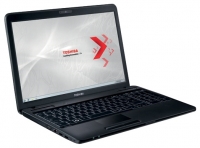
Toshiba SATELLITE C660-1Q8 (Pentium T4500 2300 Mhz/15.6"/1366x768/2048Mb/320Gb/DVD-RW/Wi-Fi/Bluetooth/Win 7 Starter) bilder
| Nächstes Bild |
Informationen zu den FotoAnzahl: 1 Bild Marke: Toshiba Kategorie: Notebooks Dateigröße: 69 Kb Bildgröße: 462x328 px Dateityp: JPG Bild URL: http://bilder.techdaten.com/photo/toshiba/toshiba-satellite-c660-1q8-pentium-t4500-2300-mhz-15-6-1366x768-2048mb-320gb-dvd-rw-wi-fi-bluetooth-win-7-starter--1.jpg Ansichten: 183 |
|
|
Bewertung zu 1 foto von Toshiba SATELLITE C660-1Q8 (Pentium T4500 2300 Mhz/15.6"/1366x768/2048Mb/320Gb/DVD-RW/Wi-Fi/Bluetooth/Win 7 Starter)
Weitere 1 photos
 |
Zahlungsmethoden 

Maximale Sicherheit 



